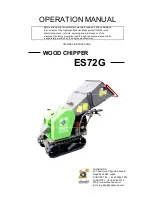
1-5
EN
Form 6S6I-B01C-EOMA-EN (0318)
Refrigerant Data:
Safety Data
R134a
Disposal
Best to recover and recycle. If this is not possible, destruction is to be in an approved facility
which is equipped to absorb and neutralise acids and other toxic processing products.
Fire extinguishing data
Non-flammable at atmospheric conditions.
Containers
Fire exposed containers should be kept cool with water sprays. Containers may burst if
overheated.
Fire fighting protective
equipment
Self contained breathing apparatus and protective clothing must be worn in fire conditions.
Refrigerant Oil Data
Safety Data
YORK 'L' Oil
Classification
Non-hazardous
In contact with skin
Minimally irritating. No first aid necessary. Exercise reasonable personal cleanliness
including cleansing exposed skin areas several times daily with soap and water. Launder
soiled work clothes at least weekly.
In contact with eyes
Flush eyes with eyewash solution or clean water for 15 minutes and consult a physician.
Ingested
May cause nausea and diahorrhea. Obtain immediate medical attention.
Inhalation
If oil mist is inhaled, remove to fresh air and consult a physician.
Occupational exposure
limits
Not determined.
Stability
Stable but hygroscopic - store in sealed containers.
Conditions to avoid
Strong oxidisers, caustic or acid solutions, excessive heat. May degrade some paints and
rubber materials.
Hazardous
decomposition
Not fully, Analogous compounds evolve carbon monoxide, carbon dioxide and other
unidentified fragments when burned. Burning may evolve irritating/noxious fumes.
Respiratory protection
Use in well ventilated areas - ventilate locally.
Protective clothing
Goggles or face shield should be worn. Gloves not necessary, but recommended, especially
for prolonged exposure.
Spill / Leak procedure
Wear suitable protective equipment. Especially goggles. Stop source of spill. Use absorbent
materials to soak up fluid (i.e. sand, sawdust and commercially available materials).
Disposal
Incinerate the oil and all associated wastes in an approved facility in accordance with local
laws and regulations governing oily wastes.
Fire extinguishing data
Flash point over 300°C. Use dry chemical, carbon dioxide or foam. Spraying water on hot or
burning liquid may cause frothing or splashing.
If a leak or spill has not ignited use water spray to disperse the vapours and to provided
protection for persons attempting to stop the leak.
Containers
Fire exposed containers should be kept cool with water sprays.
Fire fighting protective
equipment
Self contained breathing apparatus should be worn in fire conditions.
Thermal & Acoustic Materials Data
Health Hazard & First Aid
Toxicity Index <10 to NES713 Issue 3 (1991): Non-hazardous, non-toxic. No first aid
necessary.
Stability / Reactivity
Stable.
Handling / Use / Disposal
No special handling precautions required. Dispose of according to local laws and regulations
governing non-biodegradable non-hazardous solid wastes.
Fire & Explosion
Flammability rating Class 1 to BS 476 pt 7: Non-flammable. If forced to burn, combustion
products are typically over 95% carbon dioxide and carbon monoxide.
Summary of Contents for YGWH 115
Page 2: ......
Page 10: ...1 6 EN Form 6S6I B01C EOMA EN 0318 Page Left Intentionally Blank...
Page 24: ...4 8 EN Form 6S6I B01C EOMA EN 0318 Customer Connections...
Page 40: ...6 14 EN Form 6S6I B01C EOMA EN 0318 Page Left Intentionally Blank...
Page 58: ...10 2 EN Form 6S6I B01C EOMA EN 0318 Page Left Intentionally Blank...










































